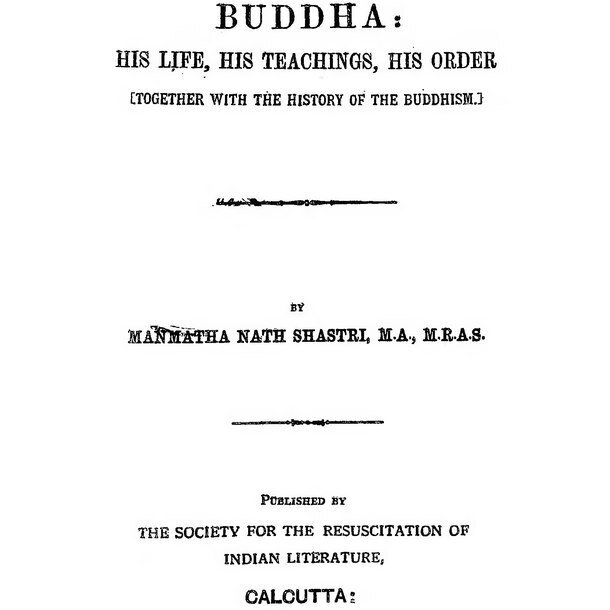One of India’s greatest translators and Sanskritists, Manmatha Nath Dutt (Shastri) (1855, Calcutta, India ‑1912, Baranagar, India) translated from Sanskrit to English important works such as Valmiki Ramayana (sequentially from 1892 to 1894), Markandeya Purana (1896), Bhagavata Purana (1896), Vishnu Purana (1896), Hari Vamsha (1897), Mahanirvana Tantra (1900), Agni Purana (1903−04), Mahabharata (1895−1905), Kamandakiya Nitisara (1896), several samhitas and dharmashastra texts (1906, 1908-09), Garuda Purana (1908) and Rig Veda Samhita (1906−1912).
Compared to Kishori Mohan Ganguli (the translator of the Mahabharata), Manmatha Nath Dutt was much more prolific, yet compared to Manmatha Nath Dutt, Ganguli is much more known (The language used in the two Mahabharata translations present an interesting contrast). Apart from this remarkable body of translation work, Dutt wrote a biography of the Buddha (1901), retold stories from the Puranas (1893−94, the four volumes titled Gleanings from the Indian Classics), retold stories about famous women in Hinduism (1897), wrote a book on Hindu metaphysics (1904) and another book on the dharma of householders (1905). These were also in English.
Dutt probably studied Sanskrit and Pali at the Sanskrit Collegiate School and College, which started to admit non-brahmana students around 1851 (Dutt was not one). When he studied in Sanskrit College, the Principal was Mahesh Chandra Nyayratna Bhattacharya. Later on, he launched a monthly magazine known as Wealth of India, “a monthly magazine solely devoted to the English translation of the best Sanskrit works” and was published between 1892 and 1908. Manmatha Nath Dutt was the editor and publisher and G. C. Chackravarti was the printer. The Dutt translations were originally, before being brought out as books, serialised in Wealth of India.
Indian author Bibek Debroy referred to Dutt’s body of work when he published his own translation of the Mahabaratha and the Valmiki Ramayana in 2018.

